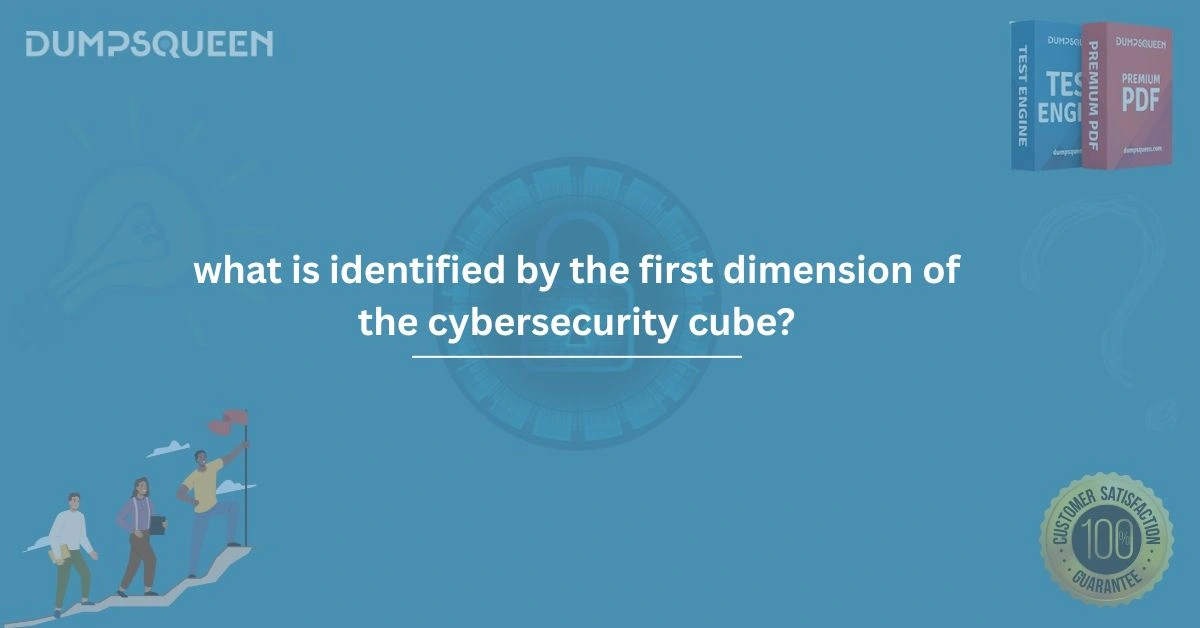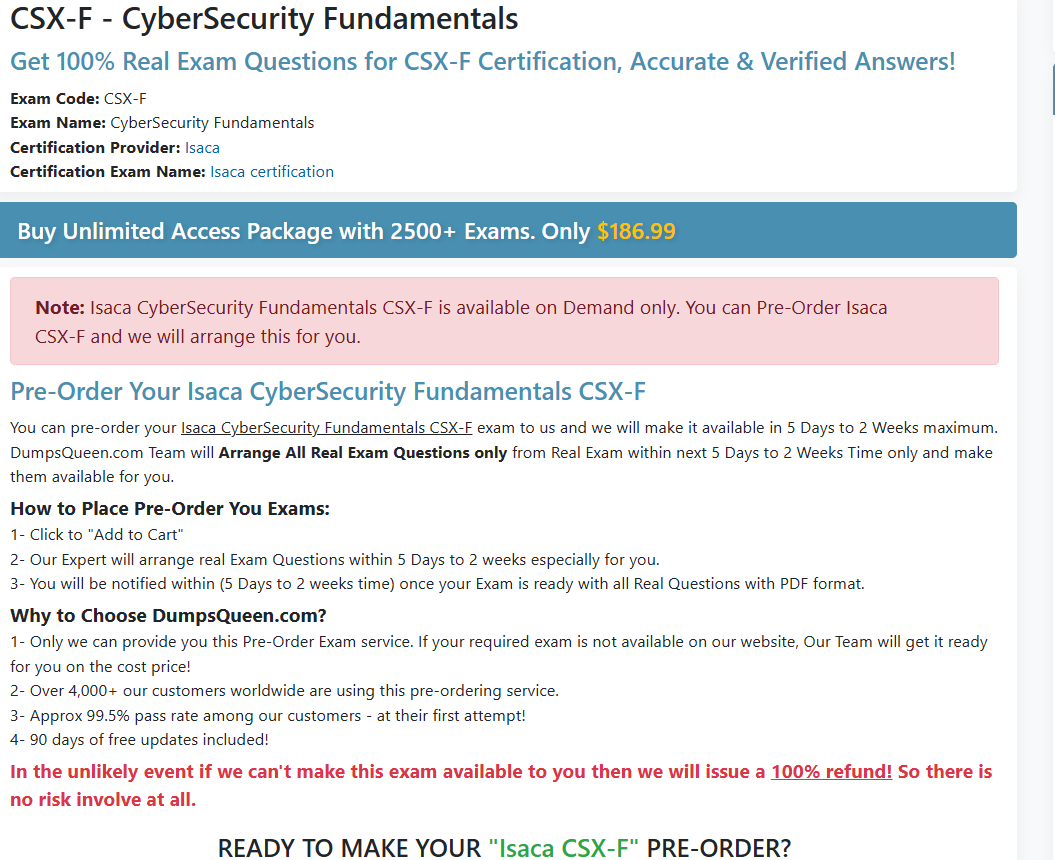Introduction
In the ever-evolving world of cybersecurity, organizations are constantly seeking ways to better understand, secure, and defend their digital assets. One framework that has gained attention for its ability to provide a structured approach to cybersecurity is the "Cybersecurity Cube." This model, developed to address the complexities of cybersecurity, is multidimensional, with each dimension representing a different aspect of security. The first dimension of the cybersecurity cube is particularly significant, as it forms the foundation for identifying and addressing key security requirements. This blog will explore the first dimension of the cybersecurity cube in detail, examining what it identifies, how it plays a role in protecting information, and its relevance in today’s cybersecurity landscape. By the end, readers will have a clear understanding of how this dimension helps shape the approach to managing and mitigating cybersecurity risks.
What Is the Cybersecurity Cube?
The cybersecurity cube is a conceptual model designed to enhance the understanding of security across various levels and dimensions. It breaks down the complexity of cybersecurity into manageable components that can be assessed and addressed independently. The cube consists of three dimensions, each of which represents a unique aspect of cybersecurity. Each dimension focuses on specific factors that influence how security protocols are applied within an organization. These dimensions help both individuals and organizations tailor their cybersecurity strategies to meet their specific needs, ensuring they are adequately protected against threats and vulnerabilities.
What Is Identified by the First Dimension of the Cybersecurity Cube?
The first dimension of the cybersecurity cube identifies the "Security Requirements" of the organization. It focuses on defining what aspects of security need to be protected, why they need to be secured, and the level of protection required for each of these assets. Essentially, this dimension identifies the foundational security goals that an organization must meet to ensure its cybersecurity framework is robust. Security requirements can vary depending on the nature of the organization and its digital infrastructure. However, common security requirements typically include:
-
Confidentiality: Ensuring that sensitive data and information are protected from unauthorized access or disclosure.
-
Integrity: Ensuring that data is accurate and reliable and that it cannot be altered or tampered with by unauthorized entities.
-
Availability: Ensuring that data and services are accessible and usable when needed by authorized users.
-
Authentication: Ensuring that users, devices, and systems are properly identified before granting access to sensitive resources.
-
Non-Repudiation: Ensuring that the parties involved in any transaction cannot deny their involvement, thereby ensuring accountability.
Each of these security requirements is critical for protecting the organization’s assets and must be addressed in the cybersecurity strategy. The first dimension of the cybersecurity cube serves as a blueprint for understanding the scope and specific nature of the security requirements.
Why Is Identifying Security Requirements Critical?
Identifying security requirements in the first dimension is essential for several reasons. By identifying and understanding these requirements, organizations can better prepare to safeguard their information and networks. Here's why it matters:
-
Prioritization of Security Measures: Organizations can prioritize their cybersecurity efforts by understanding which areas require the most protection. For example, highly sensitive financial data may require a higher level of confidentiality than general operational data.
-
Risk Assessment: Security requirements help organizations assess potential risks and vulnerabilities. By identifying which areas of the business are most at risk, organizations can implement proactive measures to prevent breaches.
-
Compliance with Legal and Regulatory Standards: Many industries must adhere to strict legal and regulatory standards. Identifying security requirements early ensures that the organization remains compliant with these laws, avoiding penalties or legal repercussions.
-
Tailoring Security Strategies: A clear understanding of security requirements allows organizations to develop customized security strategies that address their specific needs, ensuring that no critical area is overlooked.
How the First Dimension Influences Cybersecurity Strategy
-
Defining Security Policies: Once the security requirements are identified, organizations can draft detailed security policies that outline how to protect critical assets. These policies serve as the foundation for all cybersecurity activities and ensure that every employee and system follows the same set of rules.
-
Implementing Security Controls: Based on the identified security requirements, the organization can implement the necessary security controls. These might include encryption, firewalls, intrusion detection systems, and more to protect against unauthorized access or data manipulation.
-
Aligning Security Practices with Business Objectives: Understanding security requirements helps organizations align their cybersecurity practices with business objectives. For example, if an organization prioritizes the confidentiality of client data, they can implement encryption and access control mechanisms to ensure the protection of that data.
-
Enabling Incident Response: When an incident occurs, having clearly defined security requirements allows organizations to respond swiftly and effectively. By knowing what data or assets are most important, the incident response team can take targeted actions to minimize damage.
Challenges in Identifying Security Requirements
While identifying security requirements in the first dimension is critical, it is not without its challenges. Organizations often struggle with defining comprehensive and accurate security requirements due to various factors, such as:
-
Complexity of the Digital Environment: With the growing complexity of networks, devices, and services, it can be challenging to pinpoint exactly which assets need the most protection. Businesses often have a mix of on-premises and cloud-based systems, making it harder to secure everything.
-
Evolving Threat Landscape: Cyber threats evolve constantly. New attack vectors and vulnerabilities are discovered every day, which means organizations must continuously reassess their security requirements to keep up with emerging threats.
-
Resource Limitations: Smaller organizations may face limitations in terms of resources, both human and financial, making it difficult to fully address all security requirements. Properly identifying and addressing all security needs requires careful planning and investment in the right technologies.
-
Balancing Security and Usability: Achieving a balance between strong security and ease of use can be challenging. Overly strict security measures can create friction for users, leading to decreased productivity or even security workarounds.
Free Sample Question
Which of the following is a security requirement identified by the first dimension of the cybersecurity cube?
A) Data availability
B) Incident response time
C) Firewall configuration
D) Network monitoring protocols
Correct Answer: A) Data availability
Why is identifying security requirements essential for an organization’s cybersecurity strategy?
A) It helps in choosing the right technology stack
B) It defines the roles of IT staff
C) It allows for prioritizing security measures
D) It guarantees compliance with regulations
Correct Answer: C) It allows for prioritizing security measures
Which of the following is a security requirement related to ensuring data cannot be altered by unauthorized parties?
A) Confidentiality
B) Integrity
C) Authentication
D) Availability
Correct Answer: B) Integrity
Conclusion
The first dimension of the cybersecurity cube serves as the foundation for understanding and defining the security requirements that an organization must address. Identifying these requirements allows organizations to prioritize security measures, develop tailored strategies, and effectively mitigate cybersecurity risks. In today’s interconnected world, understanding the security requirements of your business is crucial for maintaining a robust cybersecurity posture. At DumpsQueen, we recognize the importance of thorough preparation when it comes to cybersecurity certifications. Whether you’re pursuing exams like the CompTIA Security+ or the Certified Information Systems Security Professional (CISSP), having a solid understanding of frameworks like the cybersecurity cube can give you an edge in your studies and exams. By mastering the first dimension, you’ll be well on your way to securing your digital future.




